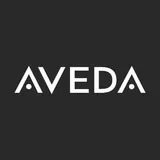
Paul Mitchell
Learn more about our scoring →
About Paul Mitchell
Paul Mitchell stands as a pioneering professional haircare brand that has maintained independence since its 1980 founding, establishing itself as a salon-quality leader in shampoos, conditioners, treatments, and styling products. The brand has built its reputation on a foundational commitment to cruelty-free practices, maintaining no-testing policies for over four decades while expanding into mainstream retail channels including Target.
The company's sustainability performance reveals a mixed landscape of innovation and opportunity. Paul Mitchell demonstrates leadership in packaging technology through post-consumer recycled materials and bio-based alternatives, while their ingredient sourcing shows responsibility in specific areas like tea tree and mica procurement. However, gaps remain in comprehensive transparency around labor practices, water stewardship, and cruelty-free certification verification, with marketplace confusion around current third-party verification status highlighting areas where clearer communication could strengthen consumer confidence.
The Good Stuff
Where Paul Mitchell appears to be making meaningful progress. We cross-referenced these findings with multiple independent sources.
Packaging Innovation Leadership
Demonstrates advanced sustainable packaging with 94% post-consumer recycled plastic in Tea Tree products and bio-based sugarcane bottles in Clean Beauty line
Responsible Ingredient Sourcing
Maintains 100% responsibly sourced tea tree oil and ethically sourced mica from German suppliers with verified supply chain transparency
Long-Standing No-Testing Heritage
Maintains internal no-animal testing policies established since 1980, representing four decades of stated commitment to cruelty-free product development
The Reality Check
Areas where the publicly available data gets murky, incomplete, or concerning. We're transparent about the limitations of our analysis.
Cruelty-Free Certification Confusion
Current third-party certification status unclear with reported delistings from major cruelty-free organizations and ambiguity around China market sales policies
Labor and Water Transparency Void
No public disclosure of labor practices, supplier auditing programs, or water stewardship initiatives beyond basic sustainability claims
Conservation Initiative Absence
Limited evidence of biodiversity protection, wildlife habitat restoration, or conservation funding partnerships in sustainability program
Paul Mitchell's
Impact Aura
A visual representation of Paul Mitchell's positive impact
across People, Planet and Animals
Each colored area represents the brand's performance in that sustainability category. The size and intensity of each blob corresponds to their score—larger, more vibrant areas indicate stronger performance.
Our Research
Key findings from our comprehensive analysis of Paul Mitchell's sustainability performance across People, Planet & Animals impact.
Positive Impact on People
Research Highlights
- Responsible ingredient sourcing demonstrated through 100% ethically sourced tea tree and German mica verification
- Select product lines eliminate parabens and sulfates but lack comprehensive brand-wide clean ingredient policy
- Social impact initiatives include charitable partnerships with organizations like Nia Tero and Baby2Baby
- Labor practices and supplier audit programs lack public transparency and independent verification
- Marketing claims maintain cruelty-free heritage but verification status creates marketplace confusion
Evidence Strength
Strong documentation for ingredient sourcing and social partnerships, significant gaps in labor transparency and cruelty-free verification clarity
Positive Impact on Planet
Research Highlights
- Packaging innovation demonstrates 94% post-consumer recycled plastic in Tea Tree line and bio-based sugarcane bottles
- Climate action includes solar power generation facilities and carbon neutrality commitment by 2050
- Green chemistry approach through paraben-free and sulfate-free formulations in select product lines
- Water stewardship and conservation programs lack disclosure and facility-level efficiency metrics
- Biodiversity protection and habitat restoration initiatives absent from sustainability program
Evidence Strength
Excellent documentation for packaging innovations and moderate climate transparency, significant gaps in water and biodiversity reporting
Positive Impact on Animals
Research Highlights
- Sustainable sourcing verified through 100% responsibly sourced tea tree and ethically sourced German mica
- Cruelty-free commitment claimed since 1980 but lacks current third-party certification verification
- Certification status unclear due to reported delistings and ambiguity around China market sales policies
- Vegan product options available though complete product range contains animal-derived ingredients
- Wildlife conservation funding and habitat restoration partnership programs lack disclosure
Evidence Strength
Strong sourcing verification but significant gaps in cruelty-free certification clarity and conservation initiatives disclosure
See the Receipts
We don't just make claims—here are the official certifications that prove Paul Mitchell's sustainability commitments.
Frequently Asked Questions
Is Paul Mitchell sustainable?
Paul Mitchell demonstrates strong sustainability performance in packaging innovation and responsible ingredient sourcing, with 94% post-consumer recycled plastic use and verified ethical sourcing for key ingredients like tea tree oil. However, the brand shows gaps in comprehensive transparency around labor practices, water stewardship, and biodiversity conservation initiatives.
Is Paul Mitchell cruelty-free?
Paul Mitchell maintains internal no-animal testing policies established since 1980, but current third-party certification status remains unclear due to reported delistings from major cruelty-free organizations and ambiguity around China market sales policies, creating marketplace confusion about verification status.
Does Paul Mitchell use sustainable packaging?
Paul Mitchell leads in sustainable packaging innovation with 94% post-consumer recycled plastic in their Tea Tree product line and bio-based sugarcane bottles in the Clean Beauty range, demonstrating advanced materials technology in professional haircare packaging.
Is Paul Mitchell vegan?
Paul Mitchell offers select vegan product options, though the complete product range contains some animal-derived ingredients. The brand has not completed a full transition to vegan formulations brand-wide and faces uncertainty around cruelty-free verification status.
What certifications does Paul Mitchell have?
Paul Mitchell's current third-party certification status is unclear, with reported delistings from major cruelty-free certification organizations creating marketplace confusion despite the brand's stated internal no-testing policies since 1980.
Is Paul Mitchell clean beauty?
Paul Mitchell offers clean beauty formulations in select product lines that eliminate parabens and sulfates, though the brand lacks a comprehensive clean ingredient policy applied across all products. Their approach focuses on green chemistry in specific ranges rather than brand-wide reformulation.
Does Paul Mitchell sell in China?
Paul Mitchell's current China market sales policies and compliance with local animal testing requirements remain unclear, contributing to uncertainty around the brand's cruelty-free verification status and third-party certification standing.
Ready to Shop Paul Mitchell?
Find Paul Mitchell products through our trusted retail partners
The Bottom Line
Paul Mitchell demonstrates selective sustainability leadership through packaging innovation and responsible ingredient sourcing, while facing uncertainty around cruelty-free certification verification that undermines their four-decade stated commitment. The independent brand shows opportunity for enhanced transparency in labor practices, water stewardship, and clearer communication around animal testing policies to rebuild consumer confidence.


